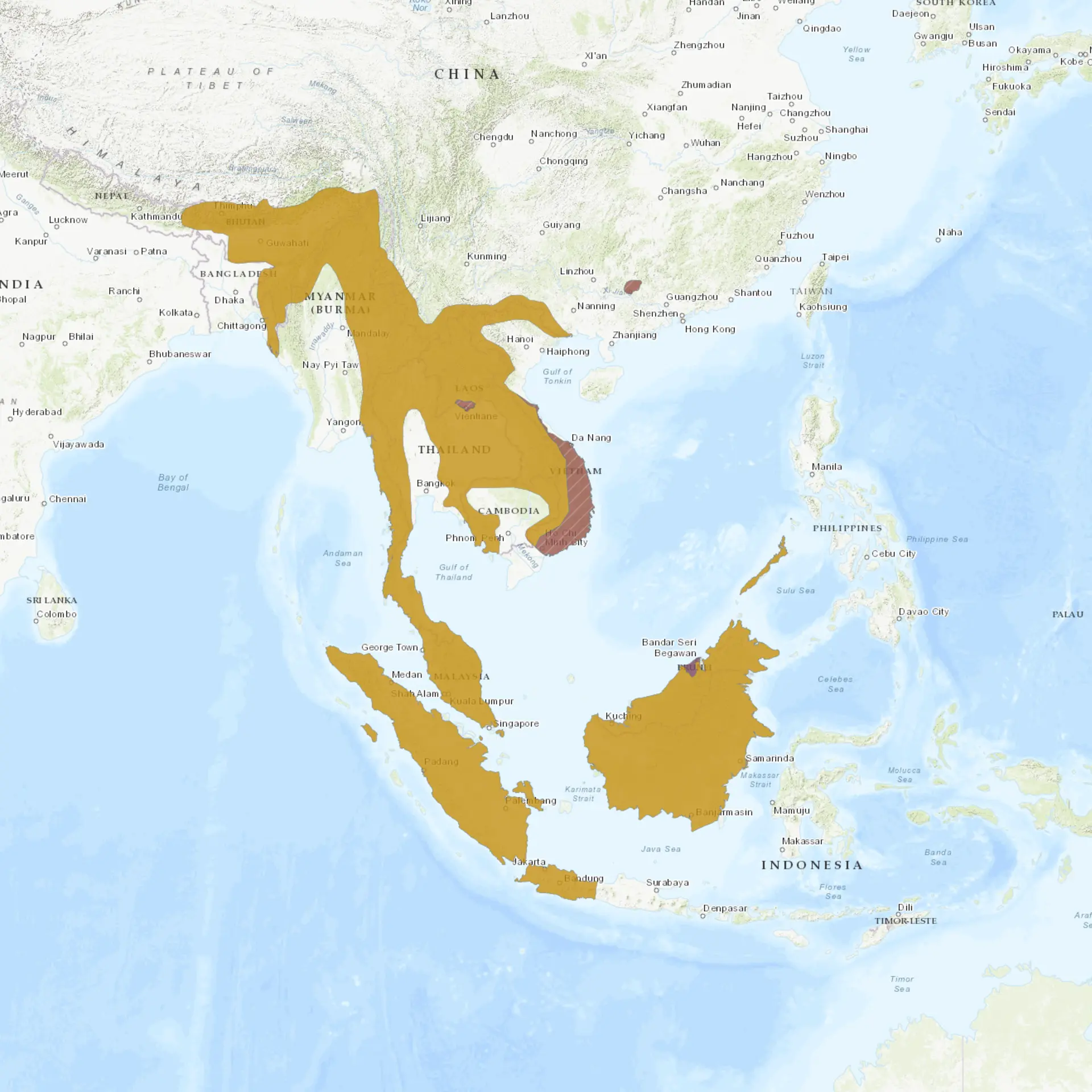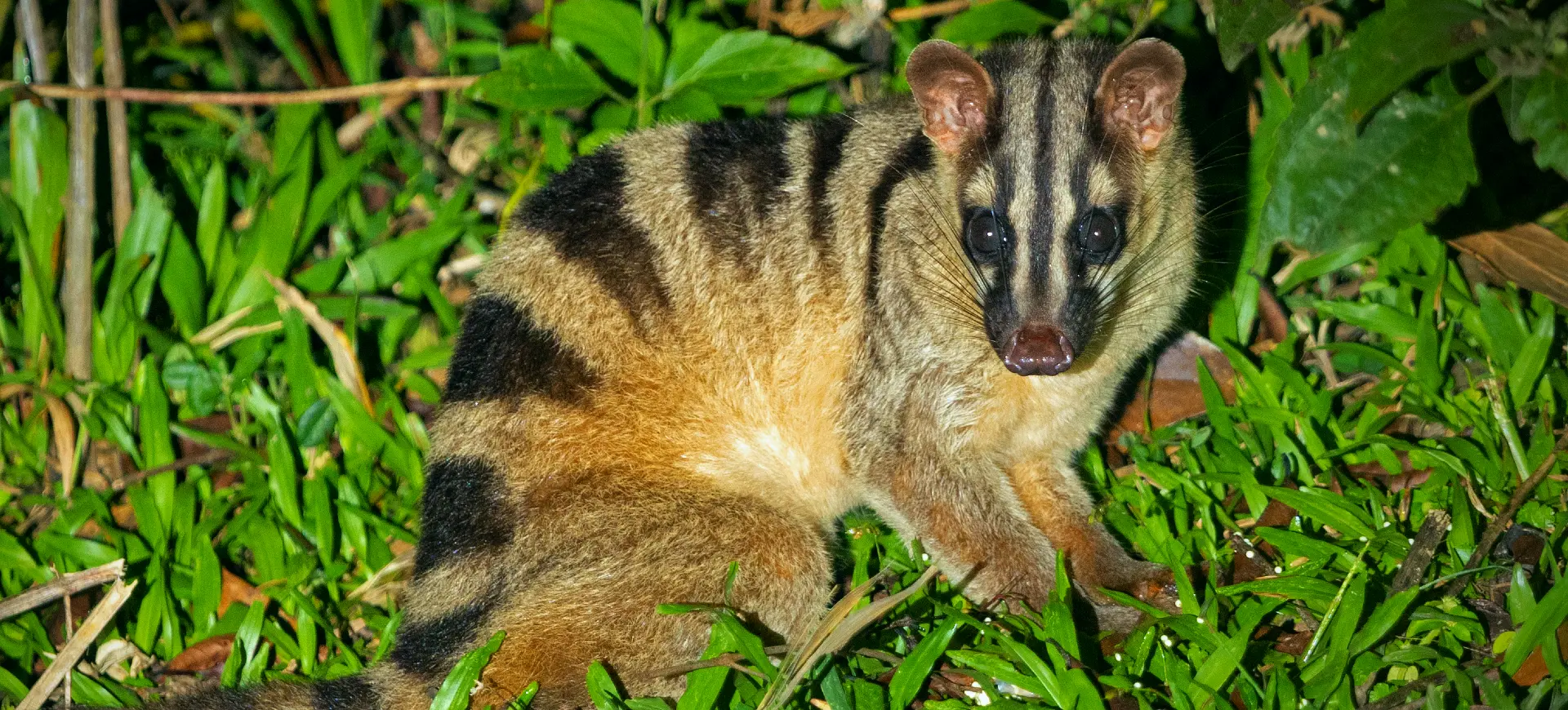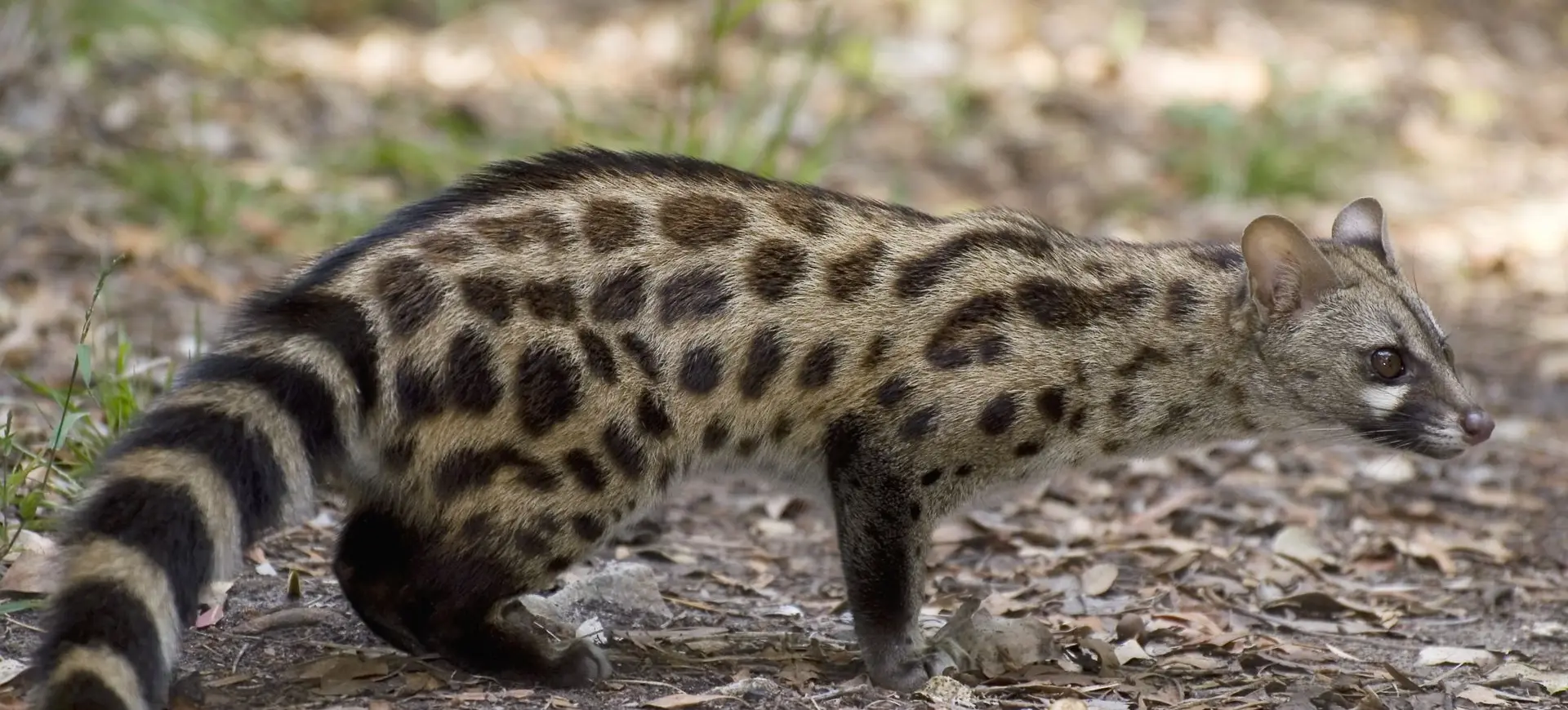Overview
The Binturong, or the bearcat, is a distinctive mammal native to Southeast Asia. It is. It is recognized for its prehensile tail, which functions as an extra limb, enhancing its arboreal agility and balance. These animals are primarily nocturnal and possess a highly developed sense of smell, which is unusual among mammals. Binturongs emit a unique odor often likened to buttered popcorn or warm bread, adding to their distinctiveness in the animal kingdom. Their ability to adapt to a tree-dwelling lifestyle makes them exceptional climbers and an integral part of their natural habitat.
Part of the Viverridae family, which includes civets and genets, Binturongs display a mix of bear-like appearance and cat-like skill, though they are not related to either bears or cats. They are omnivorous, with a diet encompassing fruits, leaves, birds, fish, and insects, playing a crucial role as seed dispersers in their ecosystems. This ecological function is vital for regenerating their forest environments, highlighting their importance in natural biodiversity. Despite their robust capabilities, Binturongs face significant challenges due to their dietary and habitat requirements.
Classified as “Vulnerable” by the International Union for Conservation of Nature (IUCN), Binturongs are at risk primarily due to habitat destruction and the illegal wildlife trade. Conservation initiatives are critical in combating these threats, focusing on habitat preservation and public education to highlight the ecological importance of Binturongs. These efforts are essential not only for the survival of the Binturong but also for maintaining the ecological balance within their habitats. Public awareness and support for conservation can greatly aid in the survival and thriving of this unique species in the wild.
Taxonomy
Kingdom
Phylum
Class
Order
Family
Genus
Species
Type
Current distribution:
The binturong’s range spans Southeast Asia, including India, Nepal, Bhutan, Bangladesh, Myanmar, Thailand, Laos, Cambodia, Vietnam, Malaysia, Indonesia, and the Philippines. Within this range, they are primarily found in lowland tropical forests but can also occupy montane forests at 1,500 meters. The Philippine subspecies, Arctictis binturong whitei, is restricted to Palawan Island and surrounding areas. While the species was once widespread, its distribution has become increasingly fragmented due to human activities.
Their current populations are primarily concentrated in protected areas, as many forest regions have been cleared for agriculture or urban development. Deforestation of palm oil plantations in countries like Indonesia and Malaysia has drastically reduced the availability of suitable habitats. They are also often captured for the illegal pet trade or hunted for their meat and fur, further decreasing wild populations. Conservation programs and legal protections are critical to ensuring the survival of this species in its native range.
Physical Description:
The Binturong is a sizable mammal with a heavy, elongated body, a broad face with small rounded ears, and a distinctive bushy and prehensile tail. Their fur is coarse and long, typically black, with a silvery or silvered appearance due to the white tips on the hairs. This coloration helps them blend in with their forest habitats. The Binturong’s feet are another fascinating feature, with five toes each, the claws are partially retractable, and the first toe is opposable, much like a thumb, providing a firm grip when climbing trees.
The Binturong’s prehensile tail is a characteristic feature of this species. It is almost as long as the body, thick and muscular at the base and tapering at the end with a bushy tip. This tail acts as a fifth limb, providing balance and support in their arboreal lifestyle. The face of the Binturong has a light mask-like pattern around the eyes, contrasting with its overall black fur coloration. They also have long white whiskers, which they use to navigate their environment, particularly in the dark.

Lifespan: Wild: ~15 Years || Captivity: ~25 Years

Weight: Male: 30-50 lbs (13.6-22.7 kg) || Female: 20-35 lbs (9-16 kg)

Length: Male: 30-36 in (76-91 cm) || Female: 24-30 in (61-76 cm)

Top Speed: 15 mph (24 km/h)
Characteristic:
Native Habitat:
Binturongs are found in various habitats throughout South and Southeast Asia. They are primarily arboreal animals, meaning they spend most of their time in trees. They inhabit evergreen and mixed-evergreen forests, where tall trees provide them with the necessary cover and ample food resources. They prefer forests near water bodies, like rivers and coasts.
These mammals have a knack for living at high elevations, with sightings reported up to 3000 meters above sea level. They use their prehensile tails for efficient navigation among the dense forest canopy. Despite being excellent climbers, Binturongs are not exclusively arboreal and can be found on the forest floor searching for food.
Climate Zones:
Biomes:
Biogeographical Realms:
Continents:
Diet:
Diet & Feeding Habits:
Binturongs are omnivorous animals, meaning they eat a wide variety of foods. A significant part of their diet consists of fruits, especially figs, which they forage in their forest habitats. Due to their role as significant seed dispersers, the consumption and excretion of fruit seeds are vital for forest regeneration in their native habitats.
While fruits are a considerable part of their diet, Binturongs feed on leaves, shoots, and flowers. They hunt small mammals, birds, fish, and insects for protein needs. Binturongs have been observed to exhibit clever behaviors when hunting, such as shaking tree branches to dislodge prey or using their prehensile tails to dangle from branches while they capture their food.
Mating Behavior:
Mating Description:
Binturongs are typically solitary animals, but they come together for mating. They are not seasonally monogamous; males and females may have multiple partners. Binturongs utilize scent marking to communicate their availability for mating. Females give off a specific scent when in estrus to attract males.
Once impregnated, the female undergoes a gestation period of approximately 90 days. The litter size can vary, but generally, females give birth to 1-3 cubs per litter. The young Binturongs are cared for by their mother, who nurses them until they can eat solid food and move about independently. Young Binturongs reach sexual maturity at about 2.5 years of age.
Reproduction Season:
Birth Type:
Pregnancy Duration:
Female Name:
Male Name:
Baby Name:
Social Structure Description:
Binturongs are generally solitary animals, with individuals establishing and defending their territories. Under the tail, their scent glands mark territory and communicate with other binturongs. Although primarily solitary, they may interact with others during mating or when food resources are plentiful. They are not highly social and prefer to avoid contact with other animals whenever possible.
Despite their solitary nature, binturongs exhibit strong maternal bonds. Females care for their offspring until they are independent. Individuals communicate primarily through scent marking, vocalizations, and body language. Their slow movements and nocturnal behavior help them avoid predators and reduce competition with diurnal species. Social interactions are generally limited to brief encounters, making them elusive and challenging to study in the wild.
Groups:
Conservation Status:
Population Trend:
The exact wild population of Binturongs is unknown due to their elusive nature and the difficulties in tracking them across their vast and often inaccessible habitats. However, the populations are believed to be decreasing due to habitat loss, poaching, and the illegal pet trade. In many parts of their range, Binturongs are rarely seen, suggesting that their numbers may be critically low in certain areas.
In captivity, Binturongs are found in various zoos, wildlife rehabilitation centers, and rescue centers worldwide. While precise numbers are unavailable, the captive population is believed to be stable. However, breeding in captivity is insufficient to offset the losses in the wild population, making conservation efforts in their natural habitat crucial.
Population Threats:
The primary threat to binturongs is habitat destruction, particularly the deforestation of tropical forests for agriculture, logging, and palm oil plantations. As arboreal animals, they rely heavily on intact forests, and tree cover loss forces them into smaller and more fragmented habitats. Hunting and poaching for their meat and fur and their use in traditional medicine also contribute to their decline. Additionally, they are captured for the illegal pet trade, where their unique appearance and behavior make them highly sought after.
Climate change pthreatensbinturongs, as rising temperatures and changing weather patterns disrupt their ecosystems. Habitat fragmentation increases the risk of inbreeding, disease transmission, and competition for resources. Human-wildlife conflict is also a growing issue, as binturongs may raid crops or livestock for food. Without comprehensive conservation strategies, these threats could lead to further population declines and eventual extinction in the wild.
Conservation Efforts:
Protected areas and national parks play a vital role in safeguarding the remaining populations of binturongs. Conservation organizations are working to preserve and restore critical habitats by promoting sustainable forestry practices and opposing illegal logging. Captive breeding programs in zoos and wildlife centers are helping maintain a healthy gene pool and raise public awareness about the species’ plight. Education campaigns aim to reduce demand for binturongs in the pet trade and discourage hunting.
Legislation in many countries within their range prohibits hunting and trade of binturongs, but enforcement remains a significant challenge. International organizations such as the IUCN and CITES are working to strengthen protections and monitor population trends. Community-based conservation programs involve local people to reduce human-wildlife conflict and promote coexistence. Funding and international cooperation are critical to the success of these efforts, as the binturong’s survival depends on reversing current trends.
Additional Resources:
Fun Facts
- Binturongs are one of only two species of Carnivora with a prehensile tail. The other is the kinkajou.
- Their scent marking smells surprisingly like buttered popcorn.
- Binturongs are excellent swimmers and are often found near bodies of water.
- Despite being classified as Carnivora, they have an omnivorous diet with a fruit preference.
- Binturongs play a crucial role in their ecosystems as seed dispersers.
- The name ‘Binturong’ is derived from a Malay language, where it is also commonly known as ‘bearcat.’
- They have an unusually low body temperature for a mammal, almost similar to a sloth.
- Binturongs have a slow, waddling walk but can be surprisingly quick when necessary.
- In the wild, Binturongs are known to live up to 15 years, but in captivity, they can live up to 25 years.
- Females are typically larger and heavier than males.









